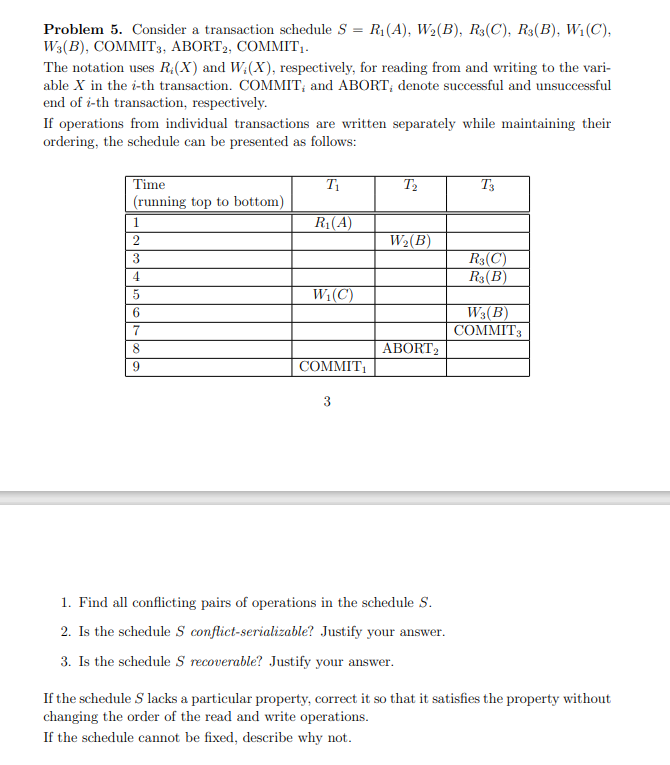Answered step by step
Verified Expert Solution
Question
1 Approved Answer
- Problem 5. Consider a transaction schedule S = R(A), W2(B), R3(C), R3(B), W.(C), W3(B), COMMIT3, ABORT2, COMMIT). The notation uses R:(X) and W:(X), respectively,

Step by Step Solution
There are 3 Steps involved in it
Step: 1

Get Instant Access to Expert-Tailored Solutions
See step-by-step solutions with expert insights and AI powered tools for academic success
Step: 2

Step: 3

Ace Your Homework with AI
Get the answers you need in no time with our AI-driven, step-by-step assistance
Get Started


